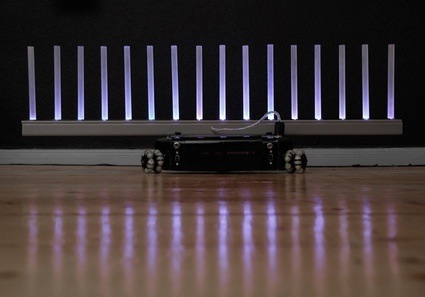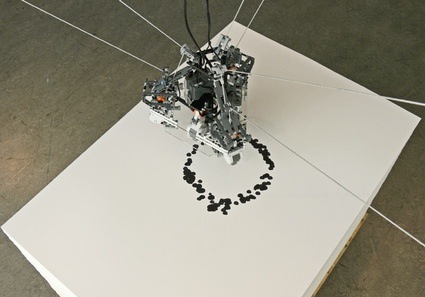
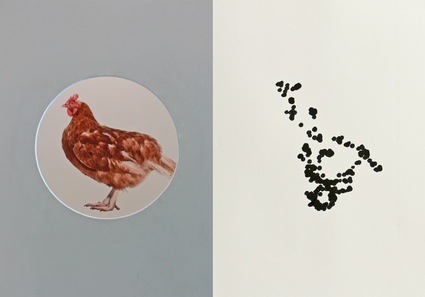
A couple of years ago, Nils Völker cooperated with one of wmmna’s favourite designers, Christien Meindertsma, to create a robot that replicates the way we look. In one space, an eye-tracker records the movement of your eyes while you are looking at images of various objects. Further away, a robot, built mainly out of Lego parts and hanging on top of a pile of paper, makes one dot for every point you have just been looking at. The resulting large scale images demonstrate how differently the same objects have been perceived.
The robot was the one work that attracted me to Nils Völker’s portfolio but it’s his creative path that started with communication design and moved to the use of physical computing in contexts as different as advertising and art exhibitions that made me realize the designer and artist was the perfect material for a quick chat.
You trained as a communication designer so how did you end up working with robotics?
At some point I discovered this Lego set which turned out to be way more than just a simple toy. In the first place I wanted to build a pen plotter, just to create some illustrations. But I realised that constructing and building the whole thing was much more fun than making the illustrations afterwards. So I’ve started to spend more and more time on building new machines. After a while the ideas became rather complex and Lego just reached its limits. Now I’m constantly dealing with pretty weird electric or programming issues I wouldn’t have been even dreaming of about a year ago. But it’s somehow great to deal with these purely logical and abstract things to end up with something that isn’t logic at all.
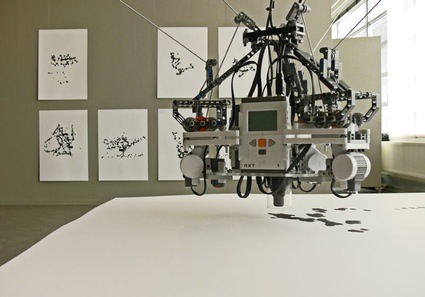
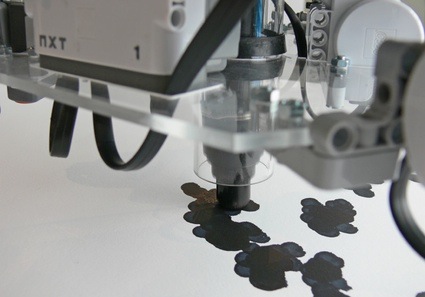 I’d like to come back to Makers and Spectators that you developed two years ago together with Christien Meindertsma for an exhibition at MU in Eindhoven. It is made mainly out of Lego parts and that’s part of its charm. Why did you chose to use these children toys? Was it mostly to give the machine a playful appearance or is there any other reason for the choice?
I’d like to come back to Makers and Spectators that you developed two years ago together with Christien Meindertsma for an exhibition at MU in Eindhoven. It is made mainly out of Lego parts and that’s part of its charm. Why did you chose to use these children toys? Was it mostly to give the machine a playful appearance or is there any other reason for the choice?
To be honest at that time there wasn’t much of a choice, whether I use Lego or not. Back then I didn’t knew anything about electronics or even had my hands on a soldering iron. But you’re right, I also like this playful appearance as the good thing about Lego is that probably everybody has once been playing with it. So people are less restrained to such kind of a machine and they approach in a much more direct, almost childlike, way. These machines just look like something simple that every child could built but when you look at the details they reveal some nice complexity.
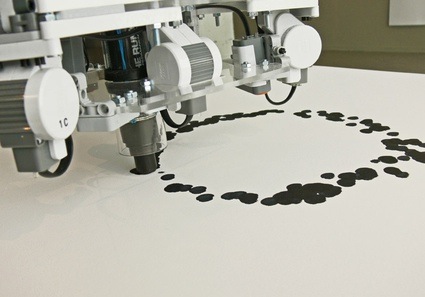
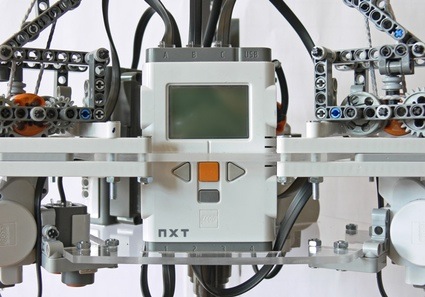 Now how about the eye-tracking technology? It seems quite sophisticated compared to the Lego blocks. Was it a technology you were familiar with? Did you have to tweak it to make it fit your purpose?
Now how about the eye-tracking technology? It seems quite sophisticated compared to the Lego blocks. Was it a technology you were familiar with? Did you have to tweak it to make it fit your purpose?
To be honest, I wasn’t familiar with it at all and there wasn’t much time to change that as there were only about five weeks to build the robot. So when I was developing it I was just assuming that there should be very likely a way to retrieve a text-file containing x- and y-coordinates which then could be interpreted by my machine. And when we were finally building up the exhibition we were lucky to have some help from a programmer who took care of most of the eye-tracking part.
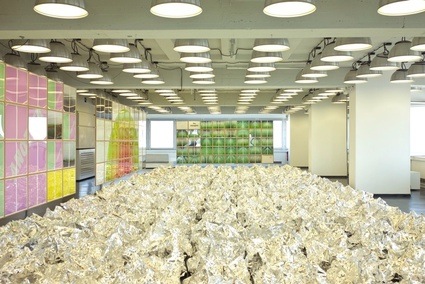 I just saw images of one of your most recent installations Captured – A Homage to Light and Air and it does look like it was a spectacular work. Could you explain us what the work was about? Did MADE give you carte blanche or did the installation respond to a precise brief they gave you? How did you come to work with inflatable bags made from space blankets? Why did you chose a material that seems to be quite unusual (to me)?
I just saw images of one of your most recent installations Captured – A Homage to Light and Air and it does look like it was a spectacular work. Could you explain us what the work was about? Did MADE give you carte blanche or did the installation respond to a precise brief they gave you? How did you come to work with inflatable bags made from space blankets? Why did you chose a material that seems to be quite unusual (to me)?
It’s a project I realised together with my brother Sven who’s a graphic designer. We both decided to come up with something based on these immaterial things like light and air; basically things you can’t capture. During almost three months of work we’ve created a huge installation which covered almost the whole room. Sven designed four large graphic walls reflecting the four different aspects of the intangible idea framing my installation which consists out of 252 inflatable cushions made from these space blankets. And finally both parts were interacting in a twelve minute performance synchronized to sound and light.
One thing I’ve definitively learned about space blankets is that they aren’t made to be heat-sealed at all. It took ages to make enough bags that didn’t instantly pop when inflated. But this foil is simply great because it sizzles so much louder than any other foil I know. And in the end the noise inside the room was just incredible. And finally its silver side does perfectly reflect the coloured light coming from the ceiling which was a connecting element for Sven’s and my work.
MADE, the place where all this happened, is surely the most extraordinary workspace I’ve ever been working at. It’s situated in the ninth floor right at the Alexanderplatz overlooking the city and in addition to that it’s equipped with this pretty sophisticated light system consisting out of 225 lamps and you can let glow any single one in any colour you can imagine.
The ambition of the team running the space is to bring people together who are working in rather different creative fields to end up with something completely new. This time it was my Brother and me combining graphic design and physical computing. And although we have been discussing all of our ideas with the MADE team, in the end we could basically do whatever we wanted to, which is quite extraordinary.
Your “About” page says that you’re working on an installation using actuators coming from cars wing mirrors. Could you already reveal us something about it?
I’m always in search for ready made components that could be recombined into something new. A while ago I could get my hands on a few of these wonderful little mirror-motors. I was still experimenting with them, when all of a sudden the “Captured” project began an I just restarted working with them lately. So I’m not yet totally sure where it will end up but very likely I’ll use them combined with larger mirrors to create moving and constantly reshaping light reflections on the opposite wall.
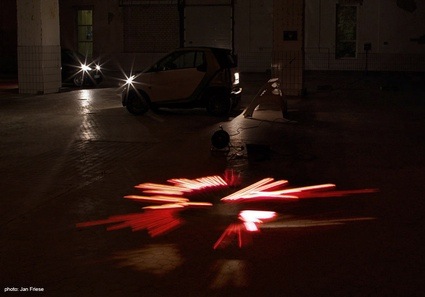 Thanks Nils!
Thanks Nils!

